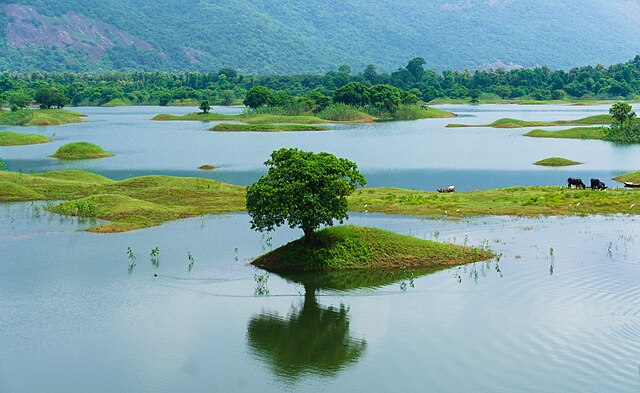Originally published September 24, 2024. Hyderabad in southern India and Pune in the west are investing heavily on rainwater harvesting systems to reduce runoffs.
Rain serves between 50 and 52% of India’s agricultural cropland during the monsoon per year, hence its conservation.
Hyderabad’s Mandate
In its part, Hyderabad has mandated rainwater harvesting from January 2025 via its Rain Water Harvesting Structures (RWHS) plan.
To make this feasible, the industrial-cum-agricultural city will make residents without RWHS pay double for tanker water.
Beginning October 2, 2024 through December 2024, Hyderabad’s Water Board will take a residential tour to ensure compliance.
Assisting the authorities will be 18 non-governmental organizations that will survey 300 square yards residences that have RWHS pits.
The pits are like boreholes only that they redirect groundwater from running into drainage systems whenever it rains.
Preliminary surveys ending September 18, 2024 of 25,578 residences revealed that slightly less than 50% of residences had aquifers.
Pune’s Rainwater Harvesting
Meanwhile, Pune, Maharashtra’s major tomato hub has followed Hyderabad’s example through water surveys.
The city’s summer survey shows only 20 to 25% of households have harvesting systems.
Focusing on 22,500 communal residences and 15,000 condos, the survey however reveals that many landlords are planning to install rooftop tanks.
Residences with existing rainwater harvesting pits say that they save 150,000 rupees ($1,797) yearly by avoiding water tankers. They clear the pits annually just before the monsoon rains begin, to replenish supplies.
Harvesting “a necessity”
According to the Water Board of Hyderabad, the increasing urban sprawl is making ground porous and many boreholes have dried up.
It has even become a necessity to serve the city with emergency supplies from reservoirs like Krishna and Godavari.
Besides, consumers have been receiving free supplies from the Water Board, amounting to 20,000 liters, from December 2022 to date.
Now the board is encouraging the residents to use their savings from this free supply to revamp their rainwater harvesting pits.
Agriculture has also benefited, especially in Pune’s case where treated water that residents do not use redirects to their gardens.
In short, in a century of fast depreciating groundwater, two cities in different parts of India are setting regeneration examples. To learn more on rainwater collection and usage in India, read on the below statistics.
India Rainwater Harvesting Statistics
Rainwater is important in India in all aspects of life. According to a 2012 study on Research Gate, rain supplies 58% of India’s agricultural water. It also contributes 40% of the food output and 60% of livestock water needs.
The country boosts this precipitation through rainwater harvesting techniques to preserve moisture in ground aquifers or rooftop tanks before it drains. For centuries, Indians have been collecting water, including in a 16 km-long tank of the 1000s CE by the Chola Kings. This makes sense because India consumes 4% of the global water resources, given its total landmass is 2.4% of the earth’s surface.
How much rainwater does India collect each year?
India gets around 1167 millimeters of rain yearly, equal to 3,880 billion cubic meters (BCM) of rainwater. However, according to IIPA, only 1,123 BCM is available for use annually due to runoffs, drainage and evaporation. Out of this volume, 690 BCM is usually surface-based such as lakes and rivers while 436 BCM is groundwater extraction.
How much groundwater in India serves agriculture?
Irrigation takes a lion’s share of 62% of groundwater utility each year in India. It is also the main source of rural water sources at 85% and town water sources at 50%.
What is the portion of rainwater that runs off each year in parts of India?
India spends over $2 billion per year to prevent run-offs via the Rain Water Harvesting (RWH) systems. The journal Nature in 2022 estimated rainwater run-off in three semi-arid parts of India at 95 BCM, 138 BCM and 200 BCM. The study also found that farmers who used soil reinforcement recovered up to 70% of this run-off.
